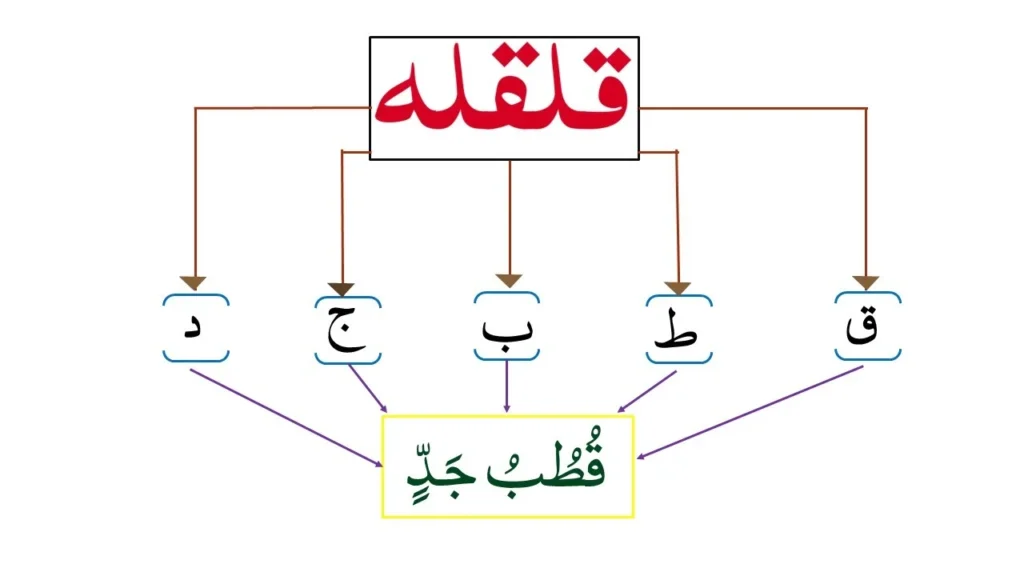Learning the rules of Tajweed For Beginners has become easier and more available than before. Even if you are a beginner or do not know the Arabic language at all! There are online courses available for learning tajweed for beginners.
Let us discuss in the following lines how to learn the rules of Tajweed For beginners, and the most important tips that will help you in learning tajweed for beginners.

The importance of learning Tajweed For Beginners
learning tajweed for beginners has great importance as follows:
1-Achieving correct recitation of the Holy Quran
The Noble Qur’an is the word of Allah Almighty, and Allah Almighty revealed it to His Noble Messenger Muhammad, may Allah bless him and grant him peace, in a specific manner so that he could recite it to people and teach it to them.
In order to achieve the correct recitation of the Holy Qur’an as it was revealed to our Master Muhammad, may Allah bless him and grant him peace, a Muslim must learn the rules of Tajweed For Beginners.
Which regulates how to read the Holy Qur’an correctly, taking into account the pronunciation of the letters in their correct exits, and applying its phonetic rulings.
2-Maintaining the integrity of the tongue from mispronunciation of letters and words
learning tajweed for beginners helps the Muslim maintain the integrity of the tongue from mispronunciation of letters and words, which avoids him falling into the sin of distorting certain verses as a result of pronouncing them incorrectly.
3-Obtaining the great reward from Allah Almighty
Correct recitation of the Holy Qur’an with Tajweed has a great reward from Allah Almighty. ‘Aishah (May Allah be pleased with her) reported:
The Messenger of Allah (ﷺ) said, “The one who is proficient in the recitation of the Qur’an will be with the honourable and obedient scribes (angels) and he who recites the Qur’an and finds it difficult to recite, doing his best to recite it in the best way possible, will have two rewards.” [Al-Bukhari and Muslim].
Departments of Tajweed science
The science of Tajweed For Beginners is divided into two main parts:
- Pronunciation provisions
- Provisions of stopping and starting
1-Pronunciation provisions: Pronunciation rulings deal with how to pronounce Arabic letters in their correct forms, and applying their phonetic rulings. These provisions include the following:
- Letter exits
- Characteristics of letters
- Noon and the provisions of the static Tanween
- Tide provisions
- Provisions of the meem sakinah
- Provisions of the silent lam
2-Provisions of stopping and starting: The provisions of stopping and starting deal with how to stop and start in the Holy Qur’an, in a way that preserves its meaning and significance. These provisions include the following:
- Endowment provisions
- Provisions of initiation
One essential Tajweed rule for beginners is understanding Ikhfa Letters, which help in smooth and correct Quranic recitation.

Basics of Tajweed for beginners
Here are some basics of Tajweed For Beginners that every beginner should know:
- The exits of the letters: Every beginner must learn the exits of the Arabic letters, which are the places where the letter sounds begin.
- Rulings on Noun Sakinah and Tanween: Every beginner must learn the rulings on Noun Sakinah and Tanween, which are rules that apply to Noun Sakinah and Tanween when standing on it or connecting it to another letter.
- Rulings on Madd: Every beginner must learn the rulings on Madd, which are the rulings related to extending the sounds of letters.
There are three types of madd: madd thabi’i, madd far’i, and madd lazim:
- Madd thabi’i: Madd thabi’i is the natural lengthening of a vowel sound that occurs when it is followed by a hamza or a yaa’ mutaharrika (yaa’ with a vowel). For example, the word مال (money) is pronounced maa’il with a lengthening of the a sound.
- Madd far’i : Madd far’i is an additional lengthening of a vowel sound that occurs due to certain rules of tajweed. For example, the word رب (Lord) is pronounced rabbu with a lengthening of the u sound.
- Madd lazim:Madd lazim is a fixed lengthening of a vowel sound that occurs for certain letters. For example, the word ءالم (indeed, the) is pronounced allaam with a lengthening of the a sound.
- Qalqalah: Qalqalah is a special emphasis that is placed on certain letters when they are followed by a sukoon (silence). There are five qalqalah letters: ق (q), ط (t), ب (b), ج (j), and د (d).
- Heavy and light letters: Some letters are heavier than others, and this affects the way they are pronounced. For example, the letter ط (t) is heavier than the letter ت (t), so it should be pronounced with more emphasis.
- Laam shamsyiah and qamaryiah: The letter ل (l) has two different pronunciations, depending on the letter that comes before it. If the letter before it is a sun letter, then the laam should be pronounced with a slight emphasis. If the letter before it is a moon letter, then the laam should be pronounced softly.

How to learn Tajweed for beginners?
It is worth noting that there are multiple ways for learning tajweed for beginners, including seeking help from a Tajweed teacher, in addition to some other methods such as:
- Learn the Arabic letters and their pronunciation: Certainly, it is necessary to learn the Arabic alphabet and its pronunciation, as this is necessary to understand the rules of Tajweed For Beginners.
- Start with the basics: You must start by learning the basics of Tajweed science that we mentioned above, such as identifying the exits of each letter and the rules of Qalqalah. These basics are very important for learning the rest of the rules of Tajweed for beginners, and once you understand them well, learning the rest of the rules of Tajweed will be easier.
- Use resources: There are many resources available online and in bookstores that can help you learn the basics of Tajweed For beginners. Some helpful resources include books, websites, and videos. However, it is preferable that these resources be assistant resources, in addition to obtaining a teacher specialized in the science of Tajweed.
- Find a Tajweed teacher: Getting a good Tajweed teacher is one of the ideal ways to learn Tajweed For beginners properly. It ensures that you learn correct intonation. A good teacher who has extensive knowledge of the rules of intonation and has the ability to teach them correctly will be able to teach you the rules of intonation perfectly. Alhafidz Academy helps you learn Tajweed from a qualified Tajweed teacher who helps you learn the rules correctly and gives you feedback on your recitation, as it has a wonderful elite of Tajweed teachers with high experience in teaching Tajweed to beginners with ease and mastery.
- Practice regularly: Try to allocate some time every day to practice what you have learned from the rules of Tajweed. The more you practice and apply what you have learned, the more it will remain in your mind and the better you will become at reciting the Qur’an with Tajweed.
- Be patient: It takes time and practice to master all the rules of Tajweed For beginners so don’t get discouraged if you don’t see results right away. Just keep practicing, and you will eventually reach your goal. know that every time, effort, or money you spend in order to learn the quran is in the balance of your good deeds and you will be rewarded for it with the best reward from Allah Almighty.
Conclusion
At the end of the text, there is no doubt that learning Tajweed For Beginners is extremely important, as it helps the Muslim to read the Qur’an in the correct manner, free of melody or distortion, so Alhafidz Academy helps you in learning tajweed for beginners through a Tajweed teacher.
FAQs
What is Tajweed?
Tajweed refers to the set of rules for pronouncing the letters and words of the Qur’an correctly, ensuring clarity, beauty, and accuracy in recitation.
What are the basic rules of Tajweed?
Some fundamental Tajweed rules include:
- Makharij (articulation points) – Correct pronunciation of Arabic letters.
- Sifaat (qualities of letters) – Characteristics of each letter.
- Ghunnah – Nasal sounds in recitation.
- Madd (elongation) – Stretching letters for proper rhythm.
